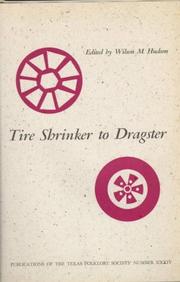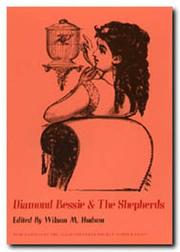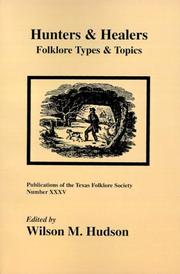| Listing 1 - 10 of 41 | << page >> |
Sort by
|
Book
ISBN: 9781947447400 9781947447417 1947447416 1947447408 Year: 2018 Publisher: Brooklyn, NY punctum books
Abstract | Keywords | Export | Availability | Bookmark
 Loading...
Loading...Choose an application
- Reference Manager
- EndNote
- RefWorks (Direct export to RefWorks)
This book treads new paths through the labyrinths of our human thought. It meanders through the darkness to encounter the monsters at the heart of the maze: Minotaurs, Centaurs, Automata, Makers, Humans. One part of our human thought emerges from classical Ionia and Greek civilisation more generally. We obsessively return to that thought, tread again its pathways, re-enact its stories, repeat its motifs and gestures. We return time and time again to construct and re-construct the beings which were part of its cosmology and mythology – stories enacted from a classical world which is itself at once imaginary and material. The “Never Never Lands” of the ancient world contain fabulous beasts and humans and landscapes of desire and violence. We encounter the rioting Centaurs there and never again cease to conjure them up time and time again through our history. The Centaur mythologies display a fascination with animals and what binds and divides human beings from them. The Centaur hints ultimately at the idea of the genesis of civilisation itself. The Labyrinth, constructed by Daedalus, is itself a prison and a way of thinking about making, designing, and human aspiration. Designed by humans it offers mysteries that would be repeated time and time again – a motif which is replicated through human history. Daedalus himself is an archetype for creation and mastery, the designer of artefacts and machines which would be the beginning of forays into the total domination of nature. Centaurs, Labyrinths, Automata offer clues to the origins and ultimately the futures of humanity and what might come after it.
E-books --- Mythology, Classical. --- Centaurs. --- Memory. --- Ancient Greek religion & mythology --- Retention (Psychology) --- Intellect --- Psychology --- Thought and thinking --- Comprehension --- Executive functions (Neuropsychology) --- Mnemonics --- Perseveration (Psychology) --- Reproduction (Psychology) --- Mythology, Classical --- Classical mythology --- classical literature --- ancient history --- monsters --- mythology --- centaurs
Book
ISBN: 1108982956 1108987311 1108996973 1108996469 9781108996976 9781108996464 9781108982955 Year: 2022 Publisher: Cambridge : Cambridge University Press,
Abstract | Keywords | Export | Availability | Bookmark
 Loading...
Loading...Choose an application
- Reference Manager
- EndNote
- RefWorks (Direct export to RefWorks)
Recent interdisciplinary studies, combining scientific techniques such as ancient DNA analysis with humanistic re-evaluations of the transcultural value of bronze, have presented archaeologists with a fresh view of the Bronze Age in Europe. The new research emphasises long-distance connectivities and political decentralisation. 'Bronzisation' is discussed as a type of proto-globalisation. In this Element, Mark Hudson examines whether these approaches can also be applied to East Asia. Focusing primarily on Island East Asia, he analyses trade, maritime interactions and warrior culture in a comparative Eurasian framework. He argues that the international division of labour associated with Bronze Age trade provided an important stimulus to the rise of decentralised complexity in regions peripheral to alluvial states. Building on James Scott's work, the concept of the 'barbarian niche' is proposed as a way to model the longue durée of premodern Eurasian history.
East Asia --- Antiquities. --- Asian history --- Ancient world --- East Asian history --- world history --- archaeology

ISBN: 0585285691 157441108X Year: 1984 Publisher: University of North Texas Press
Abstract | Keywords | Export | Availability | Bookmark
 Loading...
Loading...Choose an application
- Reference Manager
- EndNote
- RefWorks (Direct export to RefWorks)
Collected folklore from Mexico and south Texas.
Manners and customs. --- Folklore. --- Folklore --- Jaramillo, Pedro, --- Mexico. --- Mexico --- Social life and customs. --- Folk beliefs --- Folk-lore --- Traditions --- Ethnology --- Manners and customs --- Material culture --- Mythology --- Oral tradition --- Storytelling --- Ceremonies --- Customs, Social --- Folkways --- Social customs --- Social life and customs --- Usages --- Civilization --- Etiquette --- Rites and ceremonies --- Jaramillo, Pedrito, --- Don Pedrito, --- Benefactor of Humanity, --- Healer of Los Olmos, --- Anáhuac --- Estados Unidos Mexicanos --- Maxico --- Méjico --- Mekishiko --- Meḳsiḳe --- Meksiko --- Meksyk --- Messico --- Mexique --- República Mexicana --- Stany Zjednoczone Meksyku --- United Mexican States --- United States of Mexico --- Mexique (Country) --- מקסיקו --- メキシコ

ISBN: 058525768X 1574410601 Year: 1968 Publisher: University of North Texas Press
Abstract | Keywords | Export | Availability | Bookmark
 Loading...
Loading...Choose an application
- Reference Manager
- EndNote
- RefWorks (Direct export to RefWorks)
Annotation

ISBN: 0585253676 1574410571 Year: 1972 Publisher: University of North Texas Press
Abstract | Keywords | Export | Availability | Bookmark
 Loading...
Loading...Choose an application
- Reference Manager
- EndNote
- RefWorks (Direct export to RefWorks)
In the 1860s and 1870s, luxury river boats brought U. S. Presidents Ulysses S. Grant and Rutherford B. Hayes; financier Jay Gould; writers Oscar Wilde and Walt Whitman; and actor Maurice Barrymore, the father of John, Ethel, and Lionel, to "Queen City of the Cypress"-Jefferson, Texas. Among lesser known visitors was Abe Rothschild and his apparent bride, Bessie, dressed in fashionable clothes and wearing many diamonds. The couple went to an unusual midwinter picnic in the woods, and two weeks later the body of Bessie was found in the woods shot through the head. From the three trials that followed came a folk drama, "The Diamond Bessie Murder Trial" presented annually in Jefferson as part of a historical pilgrimage. Los Pastores, (The Shepherds), is a shepherd's play having to do with the epiphany of the Christ child, arises from a tradition reaching back to the Middle Ages. The Pastores tradition is oral, either created or creatively adapted by the Franciscans in Mexico, and performed at Mission San Jose in San Antonio and elsewhere in the Southwest between Christmas and New Year's. In addition to the exploration of these two plays, this folklore miscellany contains essays on the decoration of graves in Central Texas with sea shells; camp meetings with vigorous preaching and religious seizures; Black Easter-April 14, 1935-during the Dust Bowl, when the people of the Texas Panhandle watched a rolling black cloudbank bearing down on them; Semaña Santa (Holy Week) in Seville, Spain; marriage customs in Thessaly and Macedonia; the Johannesburg mine dances, and much more.

ISBN: 0585285667 1574410911 Year: 1971 Publisher: University of North Texas Press
Abstract | Keywords | Export | Availability | Bookmark
 Loading...
Loading...Choose an application
- Reference Manager
- EndNote
- RefWorks (Direct export to RefWorks)
Folklore --- Folklore. --- Folk beliefs --- Folk-lore --- Traditions --- Ethnology --- Manners and customs --- Material culture --- Mythology --- Oral tradition --- Storytelling
Book
ISBN: 9781783719938 1783719931 9780745335865 9780745335858 9781783719945 178371994X 0745335861 0745335853 9781783719952 1783719958 Year: 2016 Publisher: Pluto Press
Abstract | Keywords | Export | Availability | Bookmark
 Loading...
Loading...Choose an application
- Reference Manager
- EndNote
- RefWorks (Direct export to RefWorks)
The economics profession has a lot to answer for. After the late 1970s, the ideas of influential economists have justified policies that have made the world more prone to economic crisis, remarkably less equal, more polluted and less secure than it might be. How could ideas and policies that proved to be such an abject failure come to dominate the economic landscape? By critically examining the work of the most famous economists of the neoliberal period including Alan Greenspan, Joseph Stiglitz and Paul Krugman, the authors Robert Chernomas and Ian Hudson demonstrate that many of those who rose to prominence did so primarily because of their defence of, and contribution to, rising corporate profits and not their ability to predict or explain economic events. An important and controversial book, 'The Profit Doctrine' exposes the uses and abuses of mainstream economic canons, identify those responsible and reaffirm the primacy of political economy.
Economics --- Economic policy --- Profit --- Net income --- Business --- Capital --- Distribution (Economic theory) --- Finance --- Surplus (Economics) --- Surplus value --- Wealth --- Income --- Risk --- Economic nationalism --- Economic planning --- National planning --- State planning --- Planning --- National security --- Social policy --- History --- E-books --- Neoliberalism. --- Neo-liberalism --- Liberalism --- 330.48 --- Neo-klassiekers en andere post-keynesiaanse theorieën. Public choice. Institutionalisten. Home economics. Analyseschool van de transactiekosten --- Neoliberalism --- economics --- Milton Friedman --- Alan Greenspan --- Joseph Stiglitz --- Paul Krugman --- Public choice --- Unemployment
Book
Year: 1999 Publisher: Washington, D.C. : The Division,
Abstract | Keywords | Export | Availability | Bookmark
 Loading...
Loading...Choose an application
- Reference Manager
- EndNote
- RefWorks (Direct export to RefWorks)
Book
Year: 2016 Publisher: Florence UNICEF Office of Research – Innocenti
Abstract | Keywords | Export | Availability | Bookmark
 Loading...
Loading...Choose an application
- Reference Manager
- EndNote
- RefWorks (Direct export to RefWorks)
This Report Card presents an overview of inequalities in child well-being in 41 countries of the European Union (EU) and the Organisation for Economic Co-operation and Development (OECD). It focuses on ‘bottom-end inequality’ – the gap between children at the bottom and those in the middle – and addresses the question ‘how far behind are children being allowed to fall?’ in income, education, health and life satisfaction. Across the OECD, he risks of poverty have been shifting from the elderly towards youth since the 1980s. These developments accentuate the need to monitor the well-being of the most disadvantaged children, but income inequality also has far-reaching consequences for society, harming educational attainment, key health outcomes and even economic growth. A concern with fairness and social justice requires us to consider whether some members of society are being left so far behind that it unfairly affects their lives both now and in the future.This Report Card asks the same underlying question as Report Card 9, which focused on inequality in child well-being, but uses the most recent data available and includes more countries.
Book
ISBN: 0140212841 Year: 1968 Publisher: Harmondsworth Penguin books
Abstract | Keywords | Export | Availability | Bookmark
 Loading...
Loading...Choose an application
- Reference Manager
- EndNote
- RefWorks (Direct export to RefWorks)
| Listing 1 - 10 of 41 | << page >> |
Sort by
|

 Search
Search Feedback
Feedback About UniCat
About UniCat  Help
Help News
News